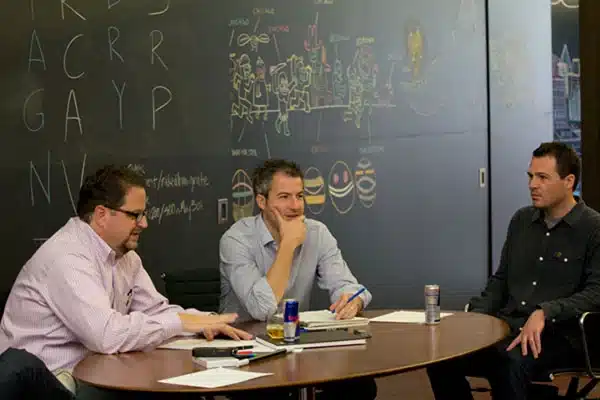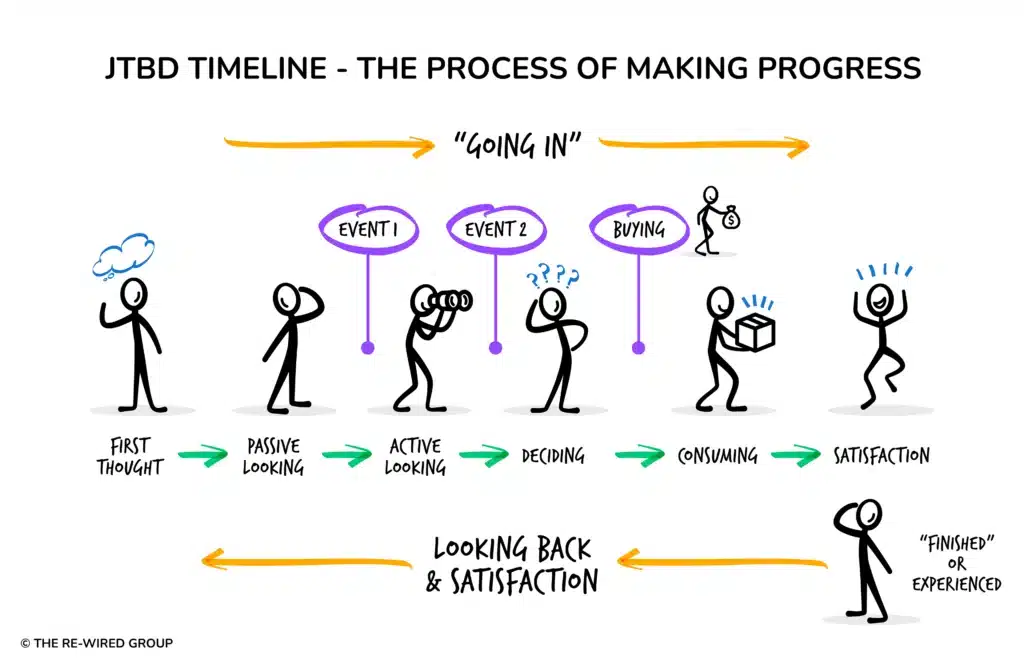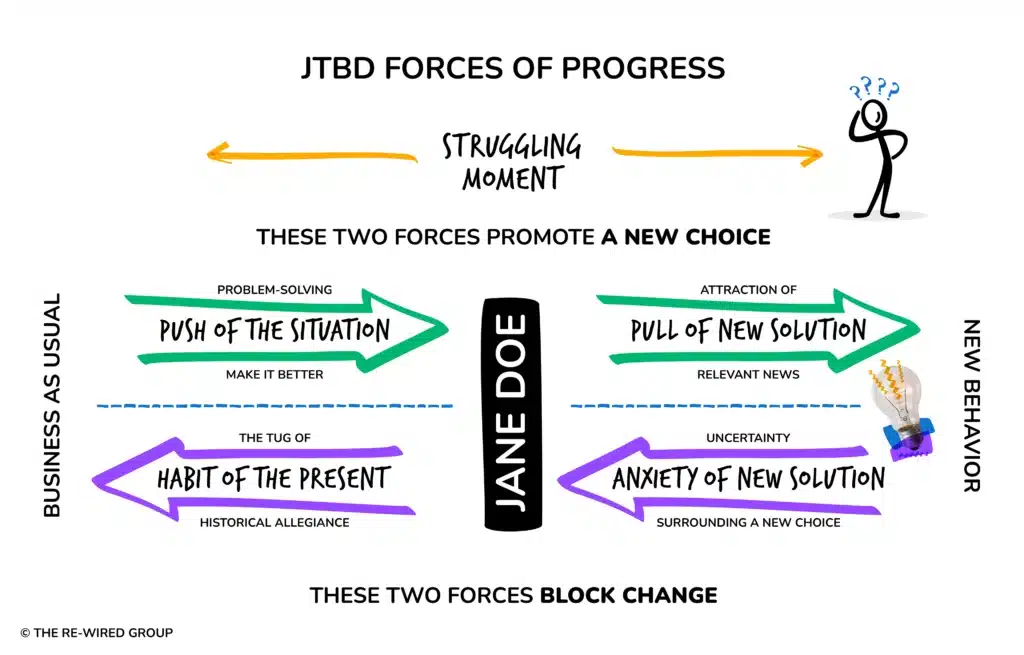About
Takeaways from The Mattress Interview at the November 2012 Switch Workshop, hosted by Jason Fried and The Re-Wired Group at the Basecamp Headquarters in Chicago.
The Mattress Interview was immortalized in the book, Competing Against Luck, where Clayton Christensen summarizes an interview with someone who bought a mattress from Costco as an “impulse purchase”.
In this Switch Workshop, we share with you the very process used to understand why the impulse buy doesn’t exist, through an interview with Bob Moesta and Chris Spiek of The Re-Wired Group, and Brian Walker, the Mattress Buyer.
(Spoiler: not one of the 30+ people in attendance would have guessed we would still be talking about this interview years later!)

Correlation versus causation
We think marketers are taught incorrectly around correlation versus causality.
They try to correlate that I’m 52 years old and I live in this zip code and I have this kind of car and therefore I have a propensity to buy that product or service.
They are triangulating around data but they don’t know what actually causes me to buy something today. They’re almost treating innovation as luck. By doing that, they look at probabilities and everything revolves around this notion of correlation as opposed to causality.
With Jobs to be Done, we actually go back and look at the progress people are making and we understand the dominoes that have to fall for you to say, “I’m buying a mattress today.”
The limitations with the traditional approach
Typical questions that come to mind about why a consumer would select a mattress would be about the features. For example:
- Is it soft enough? Is it hard enough?
- Is it too deep? Will my sheets fit it?
- What else did you consider?
- How important is price?
Yet, focusing on the product features leaves consumers’ emotional and social needs unexplored. This approach doesn’t uncover what jobs they want to accomplish or the reasons why they buy.


